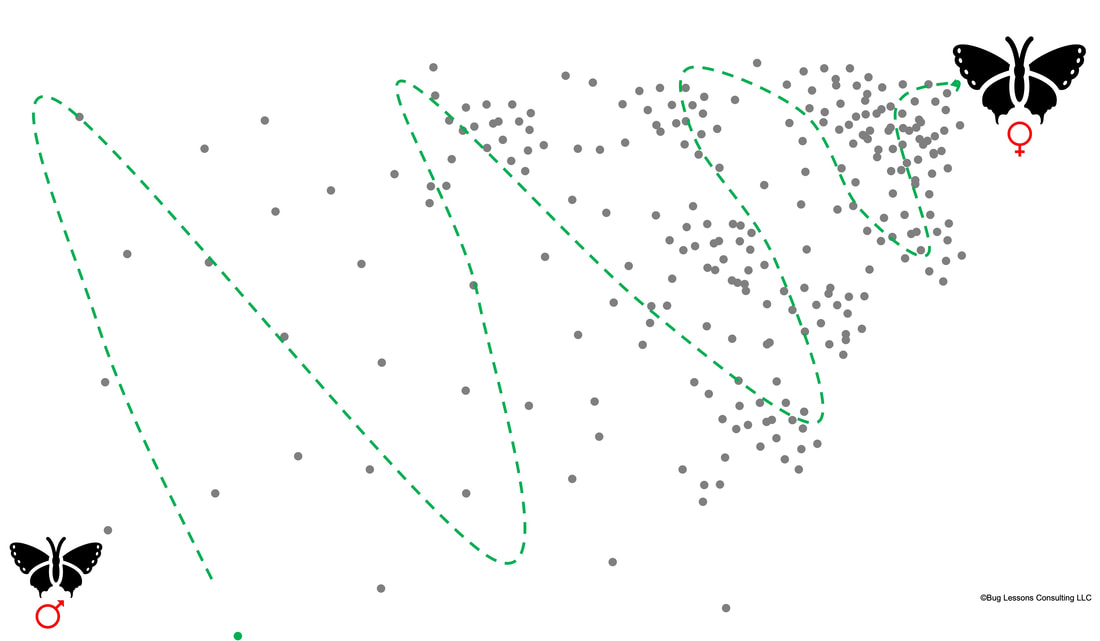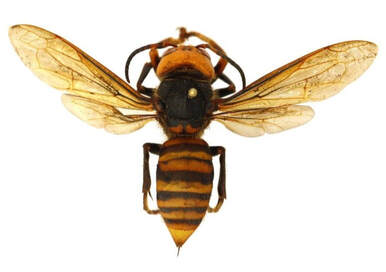|
Humans are not the only animals that talk to each other. Did you know that insects communicate by sending invisible chemical messages through the air? These conversations span subjects like where to have dinner, where the safe spaces are to hide, and details for romantic dates. Scientists can eavesdrop on these conversations and distort the messages—sometimes to our benefit. Read on to see how researchers direct Asian giant hornets to the wrong place using just the right chemical message. Scientists in the field of chemical ecology study the chemical interactions among and between living organisms and their environment. For instance, pheromones are important chemicals that animals use to communicate with one another. Popular media often presents pheromones as mysterious chemicals that attract the opposite sex, even though to date, scientists have not identified a single human pheromone. However, pheromones are not just chemicals that lure in a romantic partner. Technically speaking, pheromones are chemical messages between individuals of the same species that cause a very specific reaction, like a change in behavior. In fact, there are eight types of pheromones used by insects, and experts classify them based on the behavior triggered (e.g., aggregation, alarm, home recognition, and sex pheromones).
There has been a lot of media coverage on the Asian giant hornet (Vespa mandarinia) since its invasion into the Pacific northwest in 2019. Popularly called “murder hornets”, the species has caused widespread panic that they are going to hurt people. Fortunately, these hornets pose little direct threat to folks. Unfortunately, there is real concern that the species might establish in the United States. To try to avoid this, there has been a frenzy on the part of researchers to eliminate them from North America.
On that note, people generally use traps to monitor presence and number of pests rather than controlling insect populations. For example, since female Asian giant hornets are responsible for egg-laying and colony production, only capturing males might not reduce the number of hornets if they already mated with a female prior to capture. However, capturing males would help scientists quickly detect overall hornet activity. Thus, pest managers can use pheromone traps in the “identification” and “monitoring” portions of an integrated pest management plan. FINAL THOUGHTS Chemical ecology can help develop products that protect many different environments from pests. For instance, constantly monitoring for insect activity may stop invasive species from infesting by detecting invaders sooner rather than later. In field crops and forests, pheromone traps have been instrumental in reducing damage to plants. Additionally, these types of products are used in structures to monitor activity of urban and stored product pests. Only by listening and deciphering the secret messages of insects can we use their languages against them.
0 Comments
Your comment will be posted after it is approved.
Leave a Reply. |
Bug Lessons BlogWelcome science communicators and bug nerds!
Interested in being a guest blogger?
Archives
November 2023
Categories
All
|


